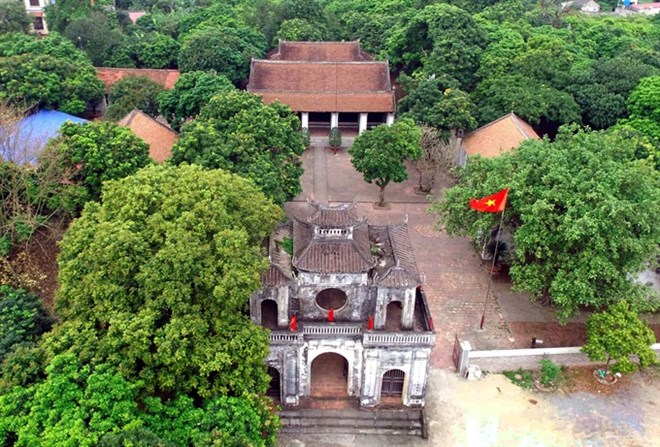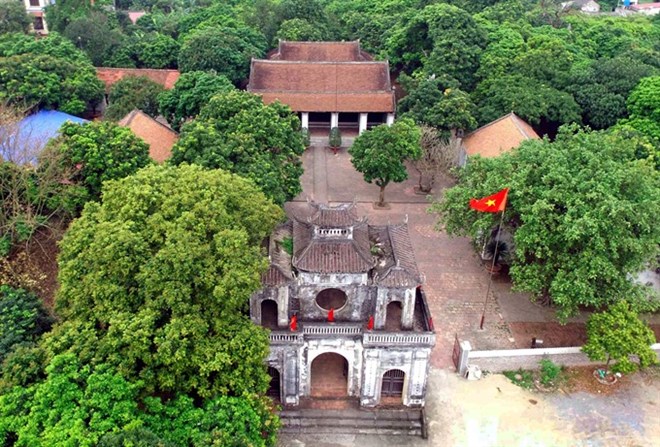



The Xich Dang
Temple of Literature, built in the 17th century in Xich Dang Commune. The
temple worships Chu Van An (1292-1370), a revered teacher in the Trần Dynasty.
It is among the 16 historical relics in the Pho Hien complex recognised as
special heritage sites (Photo: VNA)
In its tourism development plan, recently approved by the provincial
authorities, the ancient Pho Hien (Hien Street) relic complex and the Hong
(Red) River eco-travelling lodge have been listed as trademarks of Hung Yen
tourism.
The province has set a goal to develop tourism industry as a key sector for
economic development. The province seeks to tap the abundance of local
products, as well as improve facilities, and promote its cultural identity.
Vice Chairman of the provincial People’s Committee Nguyen Duy Hung said the
province has set out a variety of basic targets for development, in which
priority was given to the development of the tourism industry; facilities and
products that appeal to tourists; and particularly the protection of natural
resources and the environment.
The province also directed local tourism authorities to focus on improving
transport infrastructure and urged the business sector to invest in this field,
said Hung.
He said, on the one hand, the province will focus on domestic markets, mainly
attracting tourists from Hanoi and other provinces in the Red River Delta as
well as other provinces in the country.
On the other hand, he added, it will expand to international markets including
those in Europe, Australia, and North America.
Those in Northeast Asia and ASEAN member countries will also be considered,
according to Hung.
Hung Yen has, for several years, undertaken measures to preserve the ancient
Pho Hien relic complex, which is recognised as a special national heritage
site.
Numerous projects have been implemented in the locality since 1997 to restore
Pho Hien, in a bid to protect its cultural and historic value. Repairs have
been made to the Xich Dang Temple of Literature, the Chuong Pagoda, the Mau
(Goddess) Temple, and the Dong Do Quang Hoi and Hien Pagodas, among others.
Now the province has cordoned off nearly 2,000 hectares of land to carry out a
master plan to preserve ancient Pho Hien in line with local tourism
development.
Furthermore, the province has paid consistent attention to restoring Pho Hien
traditional cultural festivals in order to maximise the tourism potential of
the locality. Worshipping places in the complex remain particularly popular
among domestic tourists.
The Pho Hien relic complex contains countless pagodas and temples built in
Vietnamese, Chinese and western architectural styles. A Catholic church
boasting a gothic architectural style was built in Pho Hien during the 17th
century.
The complex was also once a bustling commercial port on the Red River, reaching
its heyday in the 17th and 18th centuries. Pho Hien was second only to the
imperial capital city of Thang Long as a trading point. It was well-known among
foreign traders, especially those from China, the Netherlands, Japan and
France.
Source: VNA